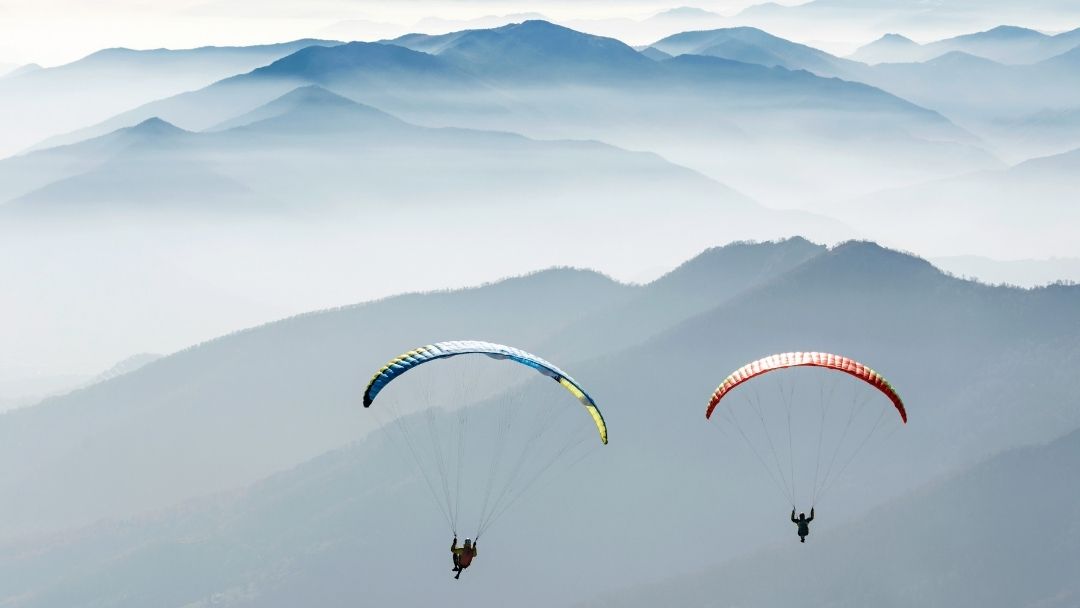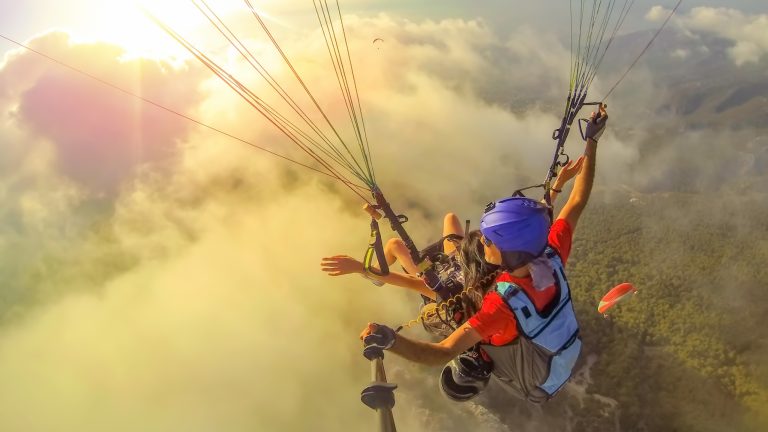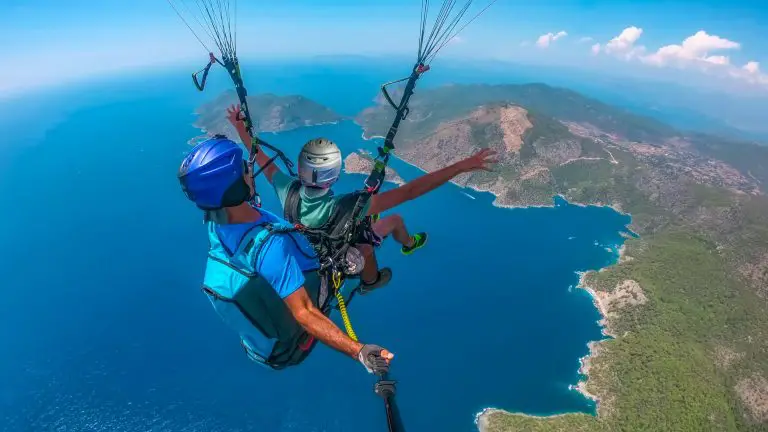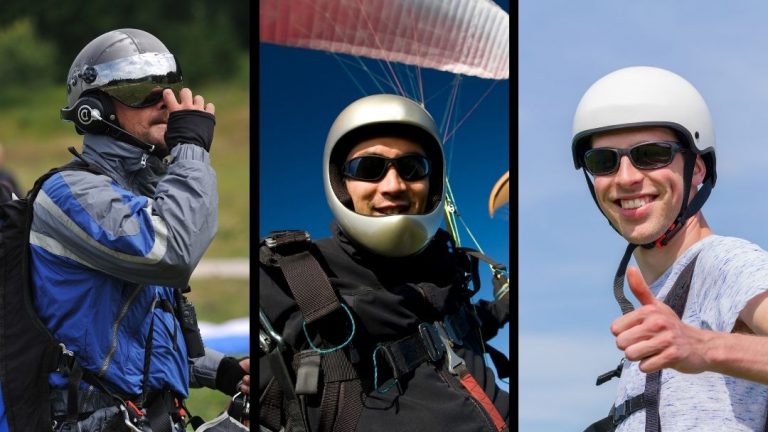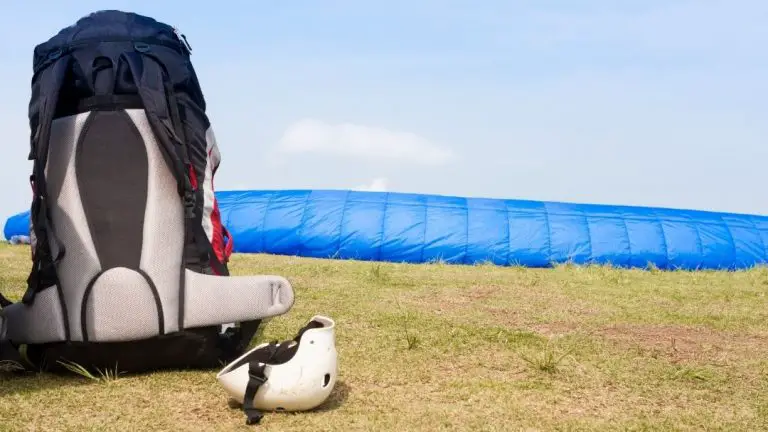Beginner Paraglider: Choosing Your First Wing
How to Chose Your First Paraglider
Finding your first paraglider is a complicated and stressful task, there are ratings, so many different brands, and colors. Then there is the cost! Do you buy new or secondhand?
There is so much to consider. Hopefully, we can guide you in making your decision here.
How much does a paraglider cost?
Let’s start with the biggest question. Paraglider wings range in cost depending on the brand and rating but the biggest factor is the age.
The price of a paraglider can vary depending on several factors, including whether you choose to purchase a new or used wing. Let’s explore both options to give you a better understanding of the price ranges involved.
New Paragliders
When purchasing a brand new paraglider, you can expect to invest anywhere from $2,500 to $6,500, depending on the model and the manufacturer.
The price can vary based on factors such as the performance level, materials used, and the overall design of the wing. Higher-performance wings with advanced technology tend to be on the higher end of the price range.
It’s worth mentioning that new wings often come with warranty coverage and the assurance of owning the latest equipment.
Used Paragliders
If you’re looking to save some money, you might consider purchasing a used paraglider. Used wings can be a more affordable option, with prices ranging from $1,000 to $4,000, depending on their condition, age, and model.
When buying a used wing, it’s essential to thoroughly assess its condition, including the number of flight hours, any repairs or modifications, and the overall integrity of the wing.
Purchasing from reputable sources, such as certified paragliding shops or experienced pilots, can help ensure the quality and safety of the used wing you choose.
Additional Costs
When considering the total cost of paragliding equipment, it’s important to factor in additional expenses such as a harness, reserve parachute, helmet, vario, and other accessories. These items typically range from $1,500 to $3,500, depending on their quality and brand.
Remember to prioritize safety and quality when making these essential purchases. Consulting with experienced pilots, instructors, or specialized paragliding shops will help ensure you choose the right equipment for your skill level and flying goals.
How and Where Will You Fly?
To start with having an idea of the kind of pilot you are or want to be will go a long way to determining the kind of wing that you should be looking at, and the relevant rating you should buy.
How Much Will You Fly?
Are you a pilot that will be flying 2-3 days every week for the foreseeable future? Or are you the kind of pilot that will be flying once less than 50 flights in a year?
If you are a casual pilot then you would be better off going for a lower-level wing that doesn’t take a lot of skill to handle. You don’t want to be worrying and fighting to control the beast every time you go flying. This is why many pilots are fine with flying an EN-A for many years as they are easy to handle and these days have quite good performance.
Where Will You Fly?
Will you fly in across the mountains for long distances, challenging cross-country records? If so a higher aspect will will probably be better for you.
Or are you a casual Pilot that will be ridge-soaring by the sea in the afternoon? If this is you then an easy to fly canopy that is very easy to fly and very safe is more likely what you are after.
Choosing the Correct EN Rating
Firstly let’s get one thing out of the way. A “safe” paraglider is not the one with the best test rating.
A Safe wing is one that YOU as the pilot can control and recover in all conditions that you will be flying in, nothing else. The passive safety of the Paraglider can help improve this especially if the pilot is a beginner, but a “safe” wing can still be dangerous in the wrong conditions or flown incorrectly.
A lot of pilots feel the temptation to buy wings with a higher EN rating when they first start out.
They hear more advanced pilots saying that the EN-A wings are slow and not very responsive. That they don’t have as good of a glide ratio as higher aspect wings so they are not as good for cross country.
Remember: The EN Testing system focusses on how a wing recovers not its tendency to enter the situation in the first place.
This means that even if a wing is rated on the safe end of the spectrum, it could be very prone to collapse, spirals and stalls.
It will recover well yes, but how quickly and easily it enters these states is also very important especially for a beginner. A wing that collapses easily will most likely scare a pilot out of flying even if the recovery was fast.
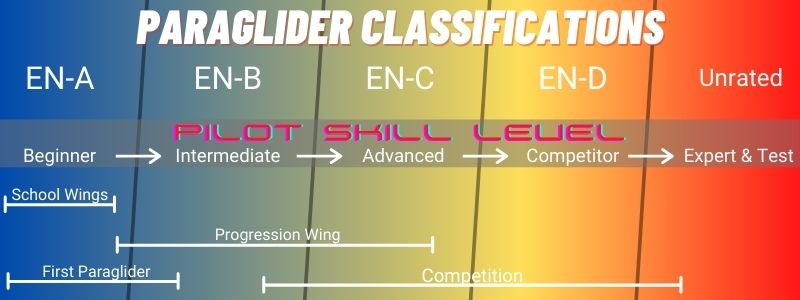
What Size Paraglider?
When it comes to determining the size of your paraglider, there are a few factors to consider. While weight ranges are crucial, it’s important to note that sizing can vary among manufacturers, and even between paragliders from the same company. It’s always recommended to check the weight range rather than relying solely on the size number.
For instance, one paraglider might require a size 24 for you, while another may suggest a size 26. To ensure the right fit, always refer to the weight rating provided by the manufacturer.
While considering weight range, it’s generally advisable to aim for the middle of the range for your paraglider. Being too large or too small for your wing can have adverse effects on performance and handling. It’s essential to calculate your total flying weight by adding your body weight, the weight of all the equipment you will carry (such as harness, reserve parachute, helmet, etc.), and the weight of the wing itself.
As a general rule, your total flying weight can be calculated by adding 15 kilograms to your body weight. This rule of thumb helps ensure that you have a suitable wing that can accommodate both your weight and the necessary equipment.
Remember, consulting with experienced paraglider pilots, instructors, or reputable paragliding shops can provide valuable insights and guidance in selecting the appropriate size for your paraglider. Each wing has its own specifications and nuances, so it’s always beneficial to seek professional advice to find the optimal size for your flying needs.
Do’s and Donts for Buying a Paraglider
| Do’s | Dont’s |
|---|---|
| Buy a wing that makes you feel confident | Buy a wing without flying it first |
| Test fly your wing before you buy it | Chose your wing by its color |
| Buy a wing that makes you feel comfortable in the air | Buy a higher rated wing than you can handle thinking that it will help you progress |
| Chose a wing you think you can handle in bad conditions |
Myths and Reality
Myth
You need a higher-performance wing to fly long distances XC and EN-A gliders don’t have a good enough glide slope for this.
Reality
The small difference in the glide slope of gliders between classes is not enough to meaningfully extend how far a beginner pilot can fly. The biggest factor in the performance of a wing is the pilot. It comes down to how well the pilot can fly the wing they have through the air while losing the least altitude.
Rough turns and bad maneuvering of the glider will cause much more sink than the difference between any two gliders, regardless of their performance.
I personally know people that have broken XC site distance records on EN-A gliders so it is definitely not something that is impossible to achieve.
Myth
School gliders are sluggish and don’t handle them well.
Reality
Any paraglider you use will be able to turn quite tightly when it is the correct size and is adjusted properly. The biggest factor here is the pilot. If a pilot knows how to handle a wing, weight-shift the right amount at the right time, and similarly with the breaks then they will be able to get the glider to perform well.
Myth
You need all the performance you can get!
Reality
Low-end paragliders are getting so advanced these days that they have much higher performance than even the top-level gliders years ago. Pushing for the last little bit will not see you improve a lot you will just get a wing that is more unwieldy to manage and this carries the danger of being scary or even dangerous.
Summary
In conclusion, as a new paraglider pilot, it’s important to consider the cost and size when purchasing a paraglider. New wings range from $2,500 to $6,500, while used wings are priced between $1,000 and $4,000. Additional equipment costs range from $1,500 to $3,500.
Choosing the right size is crucial. Consider factors such as weight, skill level, and flying goals. Beginner wings are around 23-28 square meters, intermediate wings are 20-25 square meters, and advanced wings are 16-20 square meters.
Remember to focus on the weight range rather than the size number provided by the manufacturer. Aim for the middle of the weight range for optimal performance.
Seek guidance from experienced pilots or instructors to make informed decisions. Prioritize safety and quality in your equipment choices. Enjoy the exhilarating experience of paragliding as you spread your wings and soar to new heights.

